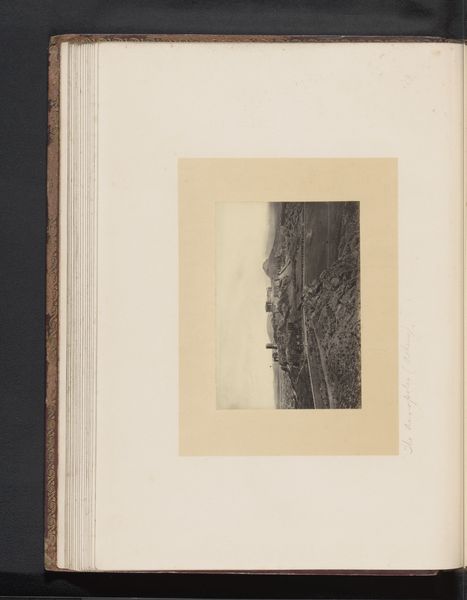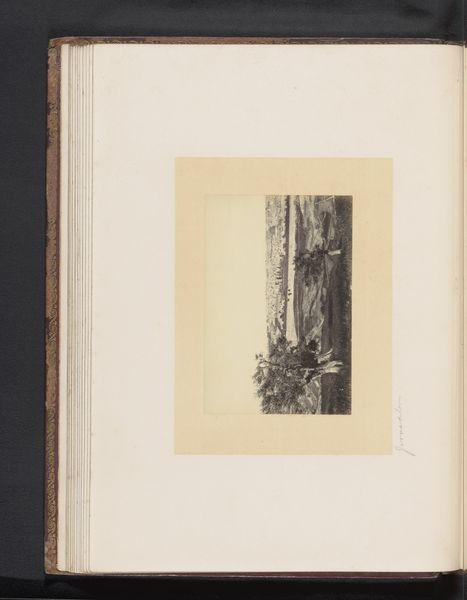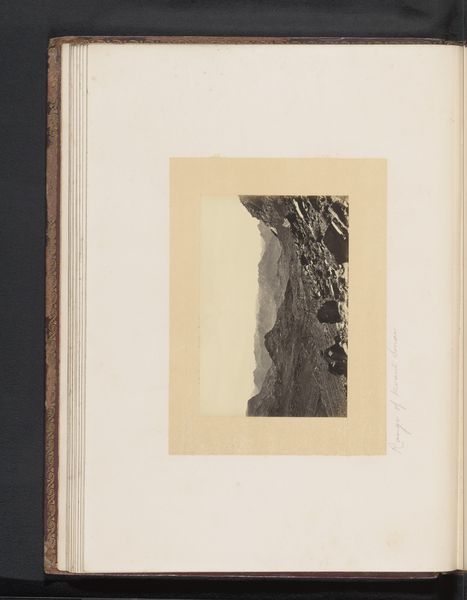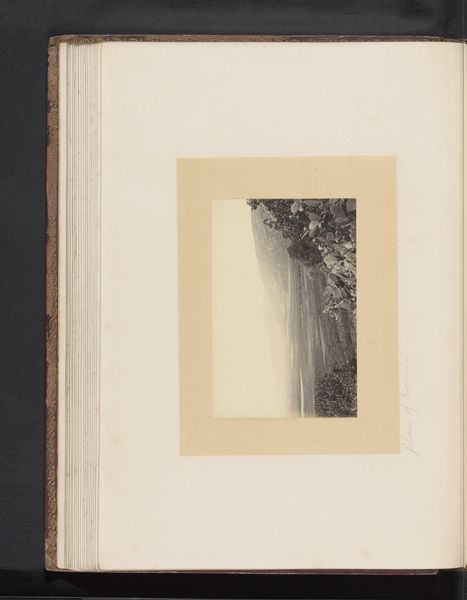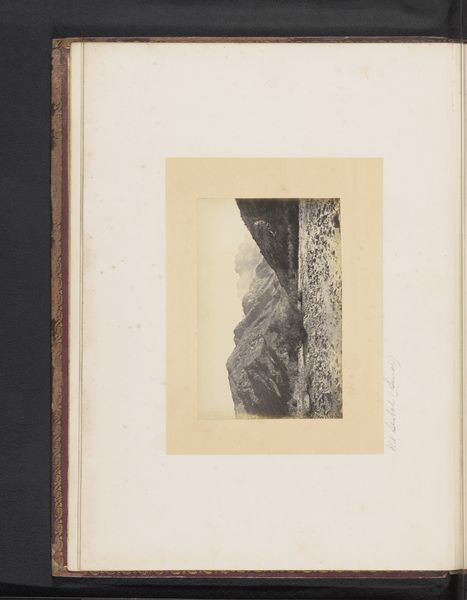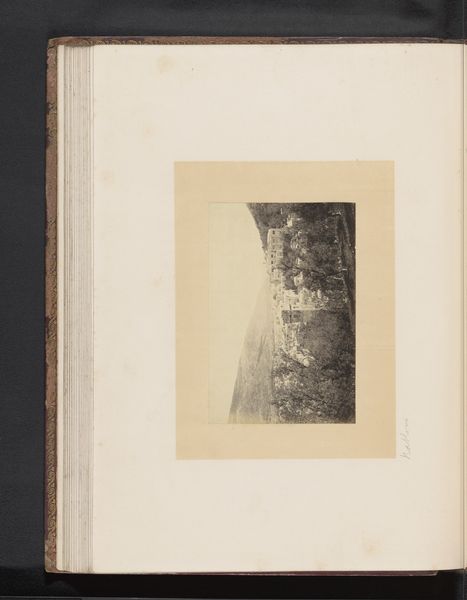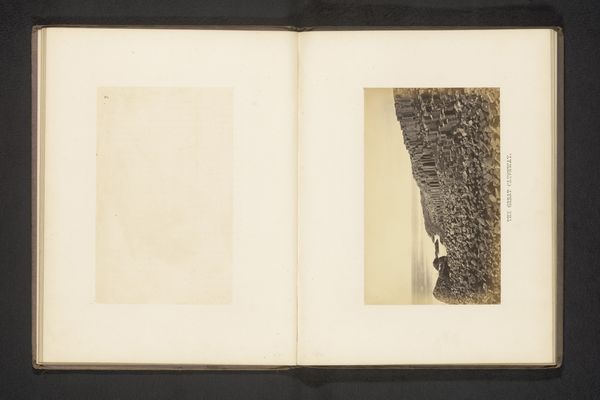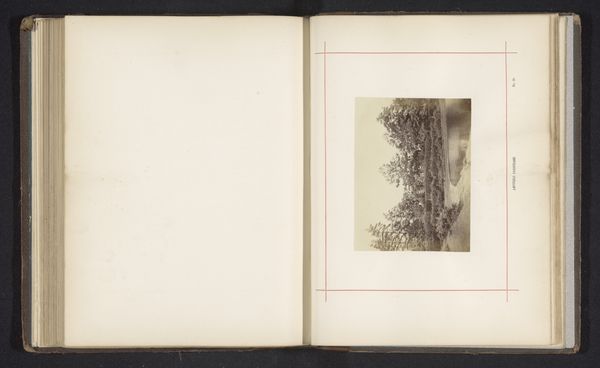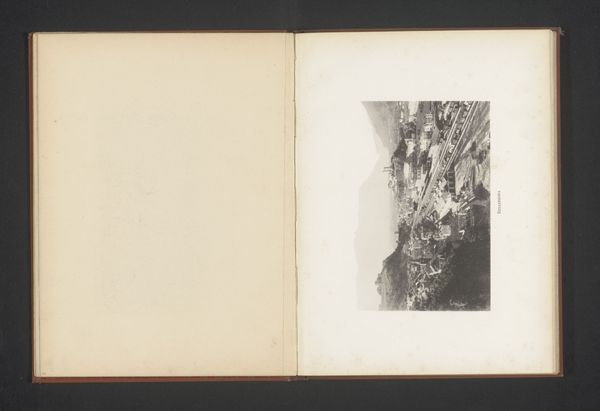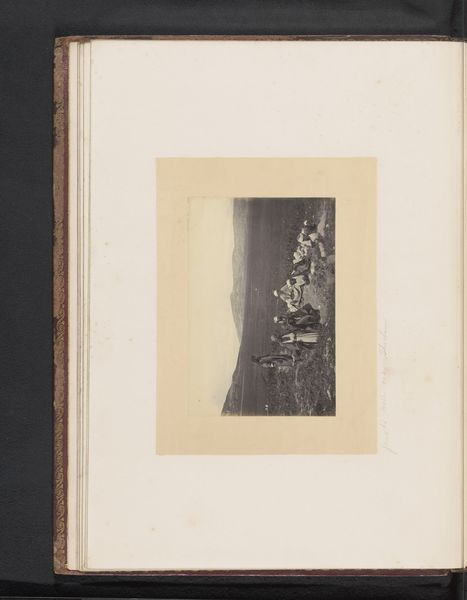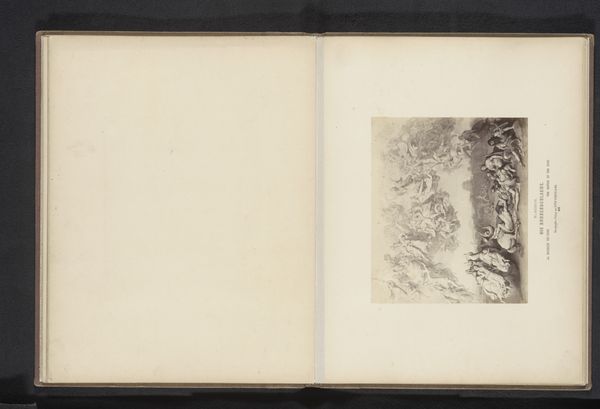
photography, albumen-print
#
landscape
#
photography
#
coloured pencil
#
orientalism
#
albumen-print
#
realism
Dimensions: height 103 mm, width 154 mm
Copyright: Rijks Museum: Open Domain
Curator: This photograph is titled "View of the Plains of Jericho," captured by Francis Frith sometime before 1875. The piece you’re looking at is an albumen print. Editor: It's immediately striking how desolate the scene is. The high contrast, the lack of any clear focal point, just… expanse. And that stark division between light and dark! It creates a real sense of unease. Curator: That sense of desolation speaks to Frith's aesthetic choices, doesn't it? His commercial photography aimed to document the Holy Land with an exacting realism and also tapped into the vogue for Orientalism. It was meant to reflect an exotic, often romanticized vision of the East. Editor: But is it truly realism, or a Western imposition? Frith is undeniably selecting a particular view, a constructed reality intended for consumption by a specific audience. This is more than just landscape photography, isn’t it? It reinforces certain colonial power dynamics and notions of a timeless "other." Curator: Precisely. The photograph presents a seemingly objective depiction, but the very act of capturing it and disseminating it carries political weight. Think about the contemporary perception of the landscape, filtered through biblical narratives and imperial ambitions. Editor: And what about Frith’s perspective? Did he see himself as merely documenting, or actively shaping, this vision? Curator: Both, perhaps? His choice of framing, the sharp tonal contrasts – those are formal decisions that directly affect how the viewer interprets the land. They invite you to understand this landscape not simply as geographical, but as something infused with spiritual or historical meaning. Editor: I find myself wanting to deconstruct this imposed framework and search for an alternative view. Perhaps that negative space to the left holds a more interesting composition to think about. Curator: This piece pushes us to consider both the aesthetic intent and the social context that helped shape this work and how we continue to shape it ourselves, even today. Editor: It certainly does. I appreciate the clarity and unease of this “View” even as it presents a highly subjective perspective, even so many years later.
Comments
No comments
Be the first to comment and join the conversation on the ultimate creative platform.
